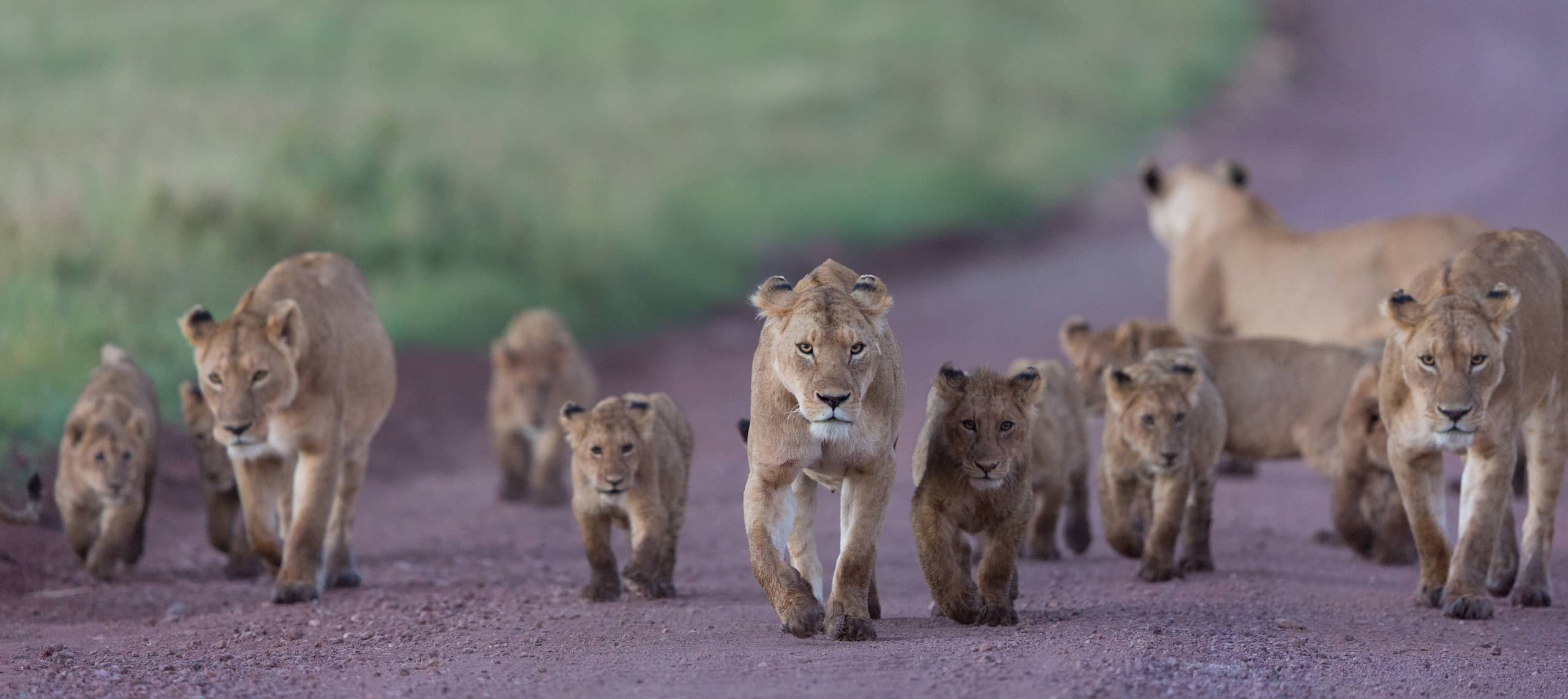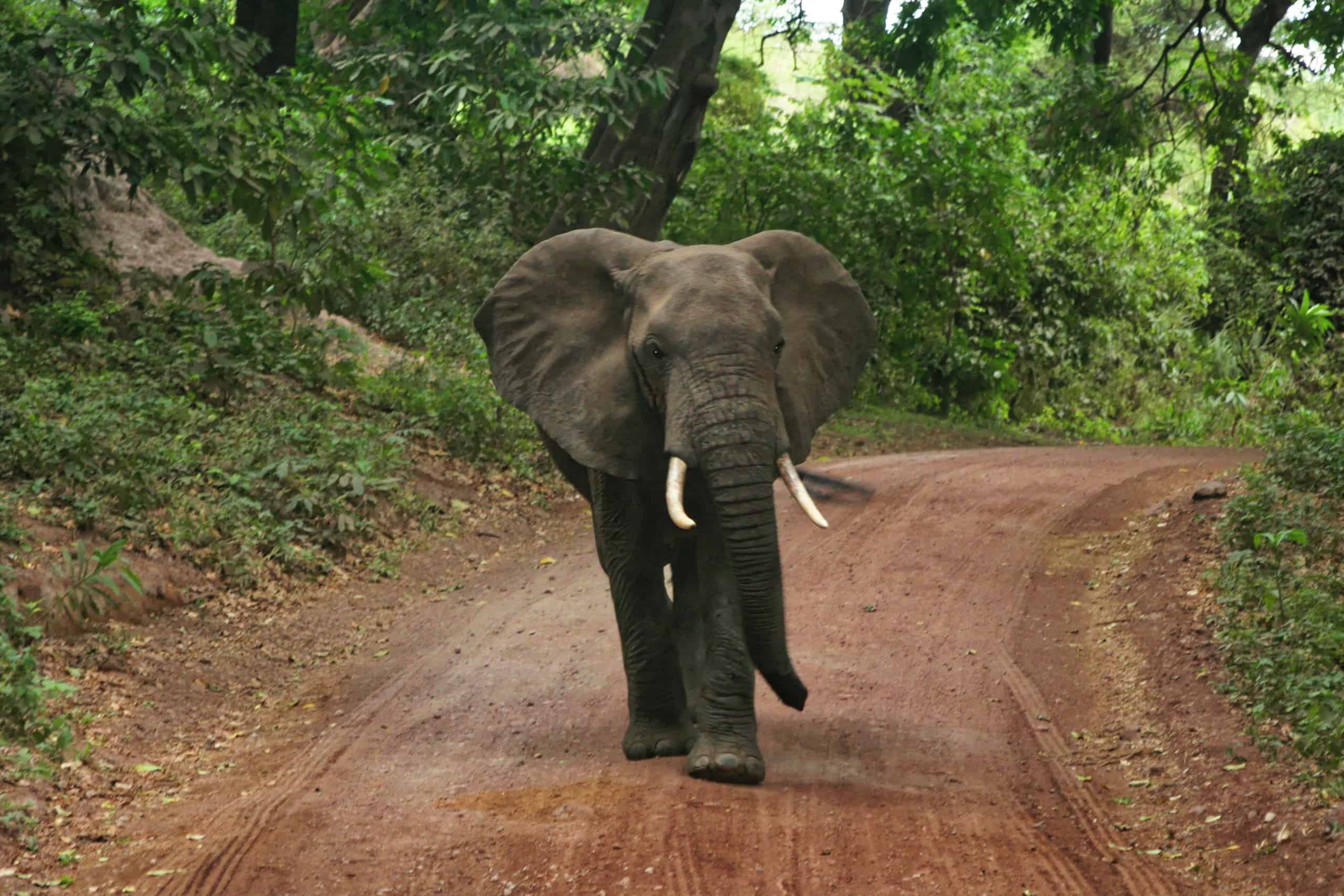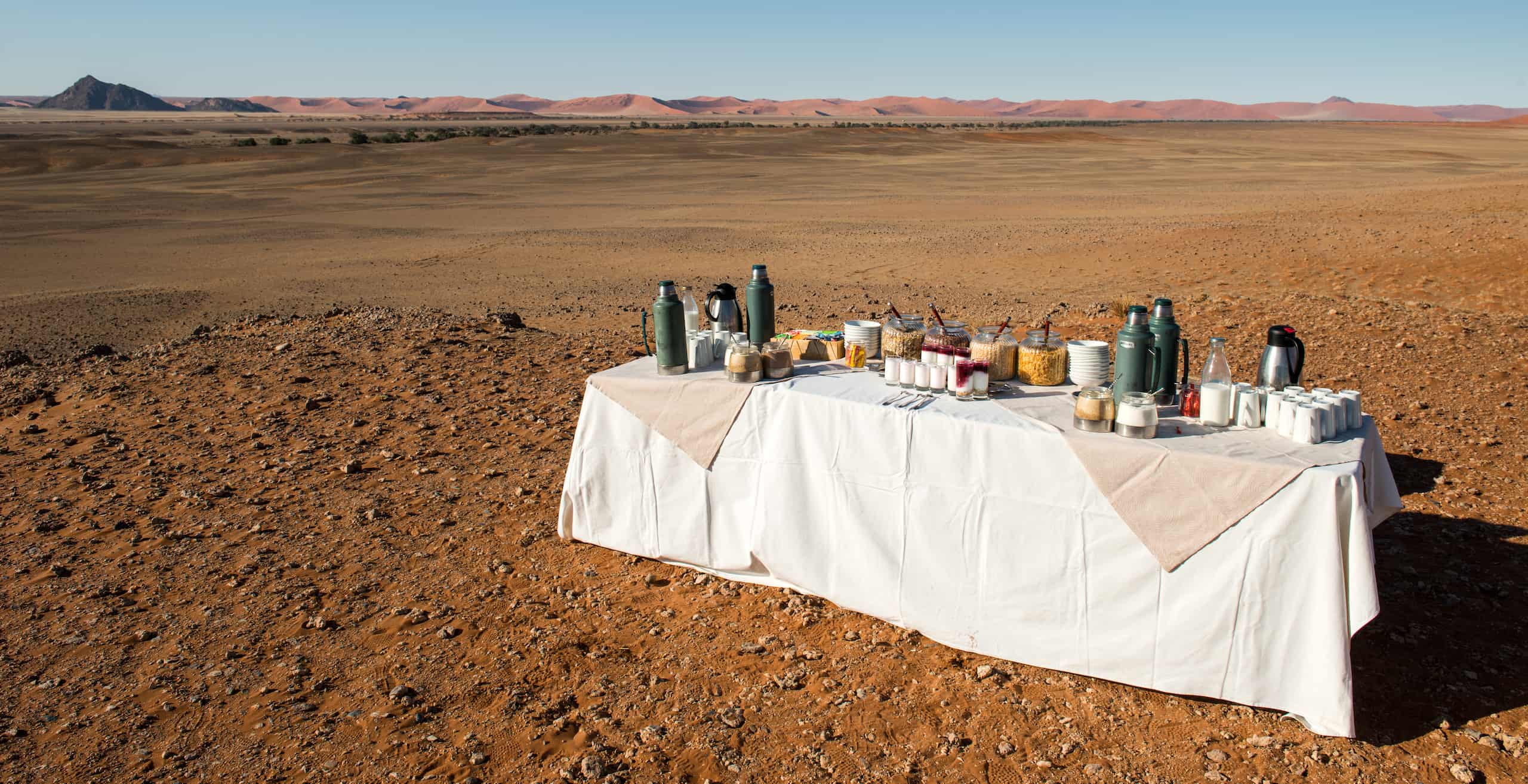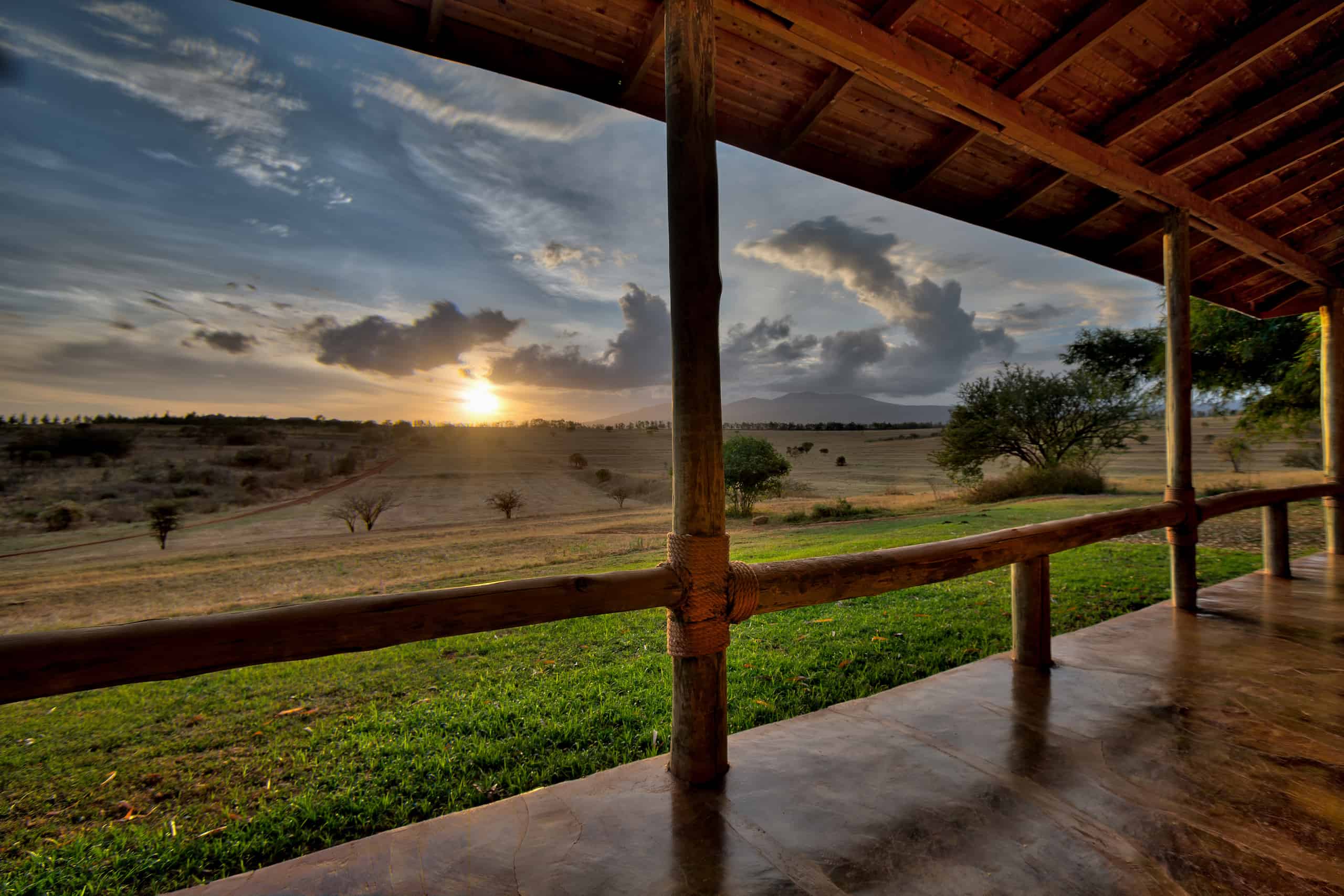A safari in Tanzania is like nowhere else in the world, with a reputation for prime game viewing, the surreal Serengeti plains, luxury lodges, stunning beaches, the famous Mount Kilimanjaro and much more.
At 1.5 times the size of Texas at 364,900 sq miles, this eastern African gem neighbours eight countries including Kenya to the north as well as the beautiful Indian ocean on its eastern coastline, whilst over 32% of its land area lies under conservation protection.
The best time to visit Tanzania is during the dry season, from late June to October. The great wildebeest migration in the Serengeti starts during June and July, a 300 mile loop for over 2 million animals following seasonal rains through Tanzania and Kenya.
Table of Contents
Why Tanzania for a safari
Tanzania is renowned as a premium destination for big 5 wildlife viewing, luxury lodges, Serengeti safari tours and beach vacations with international visitors flocking from the U.S, U.K, Europe and beyond.
The country is also home to Africa’s highest mountain Mount Kilimanjaro, Ngorongoro Crater, superb coffee plantations, UNESCO World Heritage Sites including Stone Town, wildlife-rich national parks such as the Serengeti, the superb Rift Valley lakes and more.
Top attractions visitors can expect from a Tanzania safari include:
Animals
Tanzania is famous for its wildlife with the big 5 present as well as Wildebeest, Diceros, Impalas, Dik-diks, Impalas, giraffes, hyenas, African wild dogs and many more.
All big 5 game animals can be found roaming including the African bush elephant, the lion, black rhino and white rhino, leopard and the African buffalo.
Tanzania is one of Africa’s best birding destinations with one of the largest species lists of any African country at over 1,100 bird species including the black crake, Fischer’s lovebird, Ashy starling, Tanzania seedeater and Hartlaub’s turaco.
Tanzania contains some 20% of the species of Africa’s large mammal population with most wildlife found in the surrounds of the Serengeti National Park and the Ngorongoro Crater.

Parks & Reserves
Tanzania has numerous parks, reserves and sanctuaries, all of which have their own charm, accommodation and wildlife attractions.
Tanzania has 17 national parks and many smaller parks.
Of particular note amongst parks are the Serengenti and Ngorongoro, a truly spectacular experience, as well as Nyere National Park (Selous) & Ruaha National Park.
- Serengeti National Park: 5,700 sq miles of savannah teeming with migrations of wildebeests, gazelle and zebras making this one of the 7 Natural Wonders of Africa, a national treasure in the north of Tanzania.
- Ngorongoro Crater: The world’s largest inactive cauldron-like hollow volcano with a crater floor covering over 100 sq. miles and almost 0.4 miles deep. This crater in the Ngorongoro Conservation Area has over 7,000 wildebeest, 6,000 black spotted hyenas, 4,000 zebras, 300 Elephants and 55 Lions.
- Selous Game Reserve: Also known as Nyerere National Park, this is Tanzania’s largest national park at about 12,000 sq miles, set in southern Tanzania with majestic waterways, notably the Rufiji river and interconnected lakes attracting wildlife galore.
- Ruaha National Park: Tanzania’s second largest national park with excellent game viewing of predators including lions and the endangered wild dog and 500 bird species.
- Gombe National Park: The second smallest of Tanzania’s national parks at just 20 sq miles, Gombe is characterised by steep valleys and the vegetation from grassland to woodland to tropical rainforest, a superb place for tracking chimpanzees.
- Katavi National Park: A 1,700 sq mile park renowned for large concentrations of animals including 4,000 elephants.
- Tarangire National Park: The Tarangire River provides water for the wildlife in this northern park including for the rare tree-climbing lion, leopards, cheetahs, baobab trees, birds and for the Masai people.
- Arusha National Park: At the base of Mount Meru, visitors will find this 213 sq mile lesser visited park with large numbers of African elephants, Cape buffaloes, hippos, zebras and giraffes.
- Kitulo National Park: A protected area of montane grassland and montane forest on the Kitulo Plateau in the southern highlands of Tanzania.

Other national parks of note include:
- Lake Manyara National Park: This is a protected area in Tanzania’s Arusha and Manyara Regions, known for its large elephant numbers and tree-climbing lions.
- Kilimanjaro National Park: At 644 sq miles, the park contains the largest free standing volcanic mass in the world and the highest mountain in Africa, also home to numerous giraffes, warthogs, water buffaloes, colobus monkeys, dik dik and many birds.
- Mahale Mountains National Park: A park of 637 sq. miles on the western tip of Tanzania bordering the Congo (DRC), known for its large population of chimpanzees.
- Mikumi National Park: A large park at 1,250 sq miles, 190 miles from the coastal city of Dar es Salaam, Mikumi NP has numerous waterholes, crowded with hippos, elephants and buffaloes.
- Mkomazi National Park: Mkomazi does have the big 5 present, but wildlife in general is more thinly populated in this 1,253 sq mile park.
- Rubondo Island National Park: This 176 sq mile island on Lake Victoria in the north-west is 75% covered in pristine equatorial rainforest, perfect for hippos, bushbuck, vervets, sitatungas, crocodiles, elephants, chimpanzees and giraffes.
- Saadani National Park: The only park in East Africa with an Indian Ocean beachfront with elephants and Swahili fishermen on view in this 410 square mile area.
- Saanane Island National Park: A square mile island on Lake Victoria in Mwanza, northern Tanzania, known for its zebra, impala, rock hyrax, velvet monkey and wild cats.
- Udzungwa Mountains National Park: This 770 sq mile park supports diverse wildlife, including elephant, buffalo, lion, leopard, African wild dog and eland as well as 6 species of primate.
- Jozani Chwaka Bay National Park: Located on the island of Zanzibar, this 19 sq. mile park has a landscape consisting of mangroves, tropical forests and coral rug forests, as well as groundwater, salt marshes and agricultural areas.
- Grumeti Game Reserve: Situated in the previously denuded western corridor of the Serengeti, Singita Grumeti Reserve is one of Africa’s great conservation success stories.
Safari tours
A safari tour package in Tanzania is typically organized by a tour operator, safari tour company or via a self drive Africa safari trip.
Spread across the country including Zanzibar tour packages, Tanzania’s parks and reserves can take several hours/flight to one another.
It is important to take many elements into account when visitors plan their Tanzania tour including:
- Which animals you would like to see
- Budget for the trip
- Travel party (solo, with friends or a larger family group)
- Activities you would like to include (Tanzania hot air balloon, hiking)
Guided tour
A guided safari package brings the benefit of:
- Transfer via plane/4×4 to the safari camps and lodges
- Luxury lodge packages
- Meals/drinks all catered for
- Safari guides and transport
- Facilities prepared including showers, wifi, cocktails and all requests
- Combined trips to neighbouring Kenya and beach trips to Zanzibar
- Tailored trips including chimp trekking tours
Self drive safari
For self-drive African safaris, visitors can hire their own 4×4, whilst accommodation can be secured in park campsites or in the vehicle itself if a campervan option is selected.
Part of the fun of a self drive safari is spotting the abundant wildlife on your own and taking the time to spend viewing your favourite animals.
A normal 2 wheel drive car may be sufficient, and cheaper. Other parks however will have deeper sand and a 4×4 will be required.
Best time to go on a safari in Tanzania
Tanzania is a beautiful country to visit, regardless of the season and popular with visitors from the U.S, Europe and South Africa.
Certain periods are more favorable for a safari in the best conditions. To know when to travel to Tanzania, visitors should take into consideration the following key criteria:
- Budget
- Regions visited
- Weather conditions
Overall, June to October is the best time to visit during the dry season.
Tanzania safari cost
Tanzania is a premier safari destination in Africa, thus incurring the more expensive costs associated with this.
There are multiple factors that can impact the cost of a safari including accommodation selected, trip duration, safari costs, tours, flights, transfers, meal options and additional activities and things to do in Tanzania including walking safaris which visitors may request.
Newlyweds may also indulge on a Tanzania honeymoon safari with extra pampering and luxury safaris to ensure they’re feeling the love, which can add to the overall price.
Travellers on a budget can reduce costs by booking their own flights, accommodation and activities as well as hiring a 4*4 to travel between the parks and reserves.
Visitors can review further details on overall Tanzania safari prices here.
Organizing your safari
There are a number of different options available for organizing your safari in Tanzania including:
DIY safari
Organizing your own safari is possible but only recommended for more experienced travelers and visitors on a strict budget. This option requires time and know-how to plan for all flights, transport, meals, accommodation and safari tours.
Without the knowledge of specific safari destinations and logistics in navigating an African country, this may be a challenging option for many travelers.
Tour operators
The biggest tour operators will offer safaris in Tanzania where visitors can book a package that will cover their flight, transport, accommodation, activities and food, an ideal option for those with no previous safari experience in preparing for such a trip.

Safari travel agencies
Visitors will often find dedicated safari travel agencies to be the best option in booking their dream safari. These agencies have many years experience in booking safaris as well as multiple partnerships with local tourism networks and lodges/game reserves.
Travel agencies typically offer:
- Tailor-made tours including 6 day tours
- Local tour guides
- Trips to must-see wildlife areas and parks
- All transportation
- High quality accommodation at reduced prices
The cost of the service of these specialized agencies can be a bit higher compared to other options, a cost worth bearing given the quality and ease of services provided.
Accommodation
Visitors typically will have the choice between lodges, chalets and campsites as well as African tent camps, suites and bedrooms.
Luxurious facilities are common including swimming pools, restaurants, bars, spas and terraces. Game viewings and plane transfers are organized by the accommodation providers.

Trip preparation
Entry
A tourist visa is required to enter Tanzania including U.S, U.K, Canada and EU citizens. International flights arrive via Dar es Salaam (DAR) airport or Kilimanjaro International Airport for visitors wondering how to get to Tanzania.
DAR airport is located 18km south of Dar Es Salaam and a Tanzania visa will most likely be required to enter the country. Tanzania has introduced an ‘e-visas’ system through which applications can be submitted and approved online in advance of travel.
It is also possible to get a tourist or business visa for a single entry on arrival at main ports of entry to Tanzania, subject to the fulfilment of all immigration requirements. Visitors may also be asked to provide proof of their return journey.
A visitor’s passport must be valid for at least 6 months with at least one free blank page.
Health
The CDC and WHO recommend the following vaccinations for Tanzania: Covid-19, Hepatitis A, hepatitis B, typhoid, rabies, meningitis, polio, measles, mumps and rubella (MMR), Tdap (tetanus, diphtheria and pertussis), chickenpox, shingles, pneumonia and influenza.
Yellow fever is required if traveling from a yellow fever endemic country.
Tanzania is in a high risk malaria area throughout the country except in high altitude mountains over 2000m including the Ngorongoro Crater rim, Mount Kilimanjaro and parts of the Eastern Arc Mountains.
Most safari parks are high-risk zones. The highest risk of transition is in the rainy season from November to May.
Check with a travel medicine specialist to see if antimalarials should be considered to help prevent malaria contraction. Visitors can find further information on Tanzania vaccine requirements here.
Covid-19
In September 2022, the government introduced new regulations that applies to all passengers. Travelers who have received all of their vaccinations are not required to undergo any tests. Upon arrival, travelers are required to provide a current vaccination certificate that includes a QR code.
Before departure, all foreign travelers entering Tanzania must complete an online Health Surveillance Form. International travelers entering Tanzania from Uganda and the Democratic Republic of the Congo (DRC) are required to submit an online Health Surveillance Form.
What to pack
The essential items to pack for your Tanzania safari include:
- Neutral coloured clothes
- Long-sleeved shirts protecting against the sun and mosquitoes
- Sunscreen, sunglasses, a hat and insect repellent
- Jackets and sweaters for early morning game drives
- Comfortable walking shoes
Currency
The currency of Tanzania is the Tanzanian Shilling (TZS). USD $1/GBP £0.75 = Approximately 2,322 TZS.
Carrying a small amount of Tanzanian currency, the Tanzania Shilling (TZS) is recommended to pay for groceries and smaller items where credit cards aren’t accepted.
Driving in Tanzania
Driving is conducted on the left hand side of the road in Tanzania and driving is generally considered to be safe.
Visitors driving through parks may require a 4×4, whilst carrying a map & GPS is recommended.
Insurance
Visitors should consider travel insurance when planning their trip to help protect and cover the costs of hospitalization or repatriation if required.
Some credit cards may already include travel insurance. Online travel insurance comparators are also useful in finding suitable offers.
FAQs
How much does a safari in Tanzania cost?
Visitors can expect to pay between $800 to $1,100 per person per day.
When to go on a safari in Tanzania?
Between June and October is the best time to go on a safari in Tanzania, during the dry season.